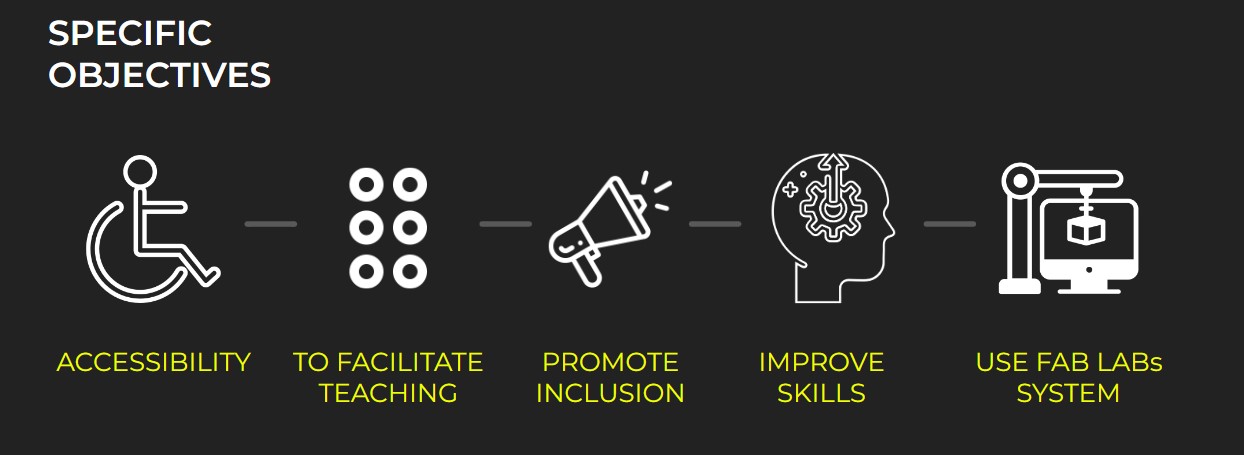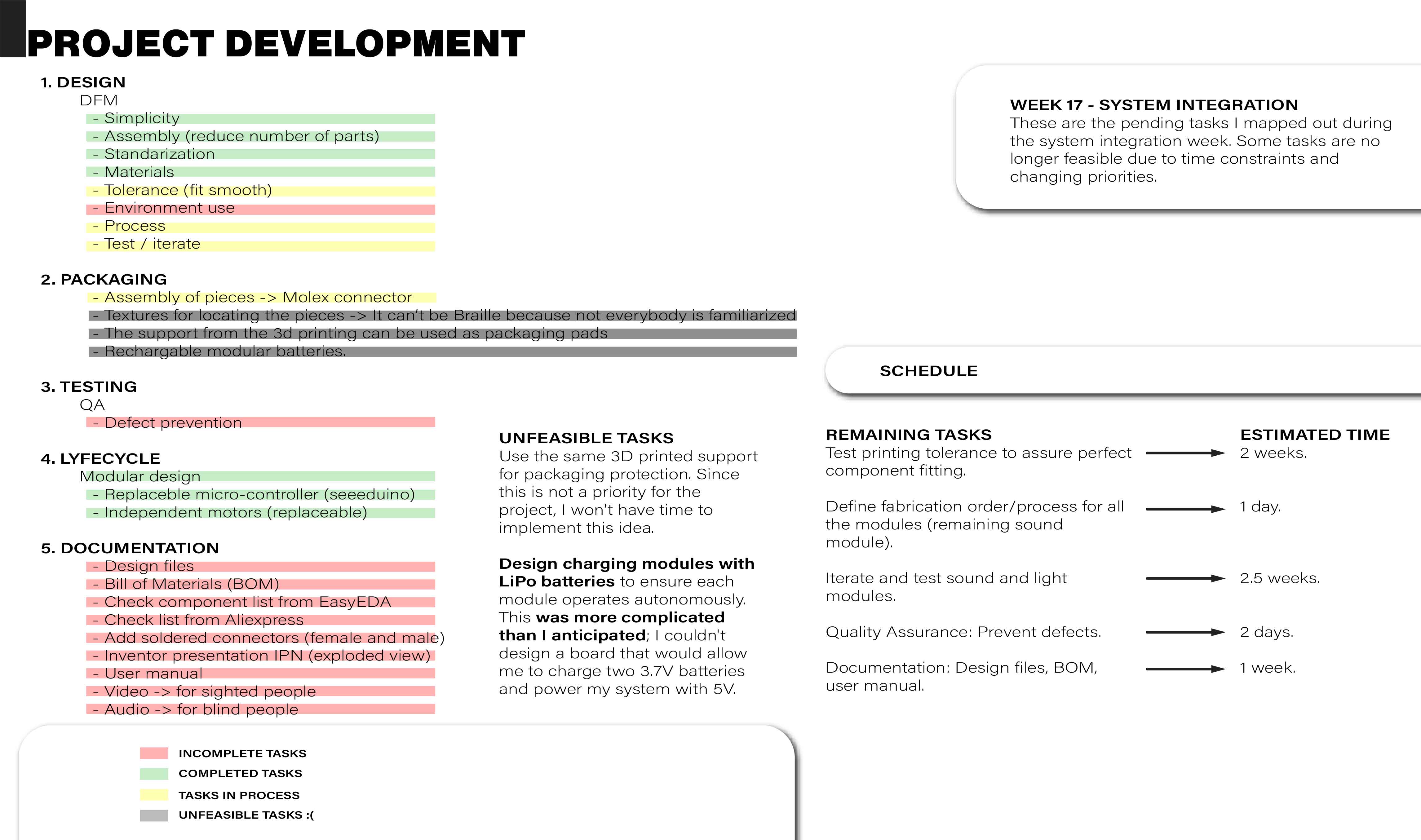WEEK 19 - Project Development
Checklist:
- Complete your final project tracking your progress.
Objectives and Scope
The primary goal of the project is to create modular, low-cost devices that provide real-time information on Braille reading and writing. These devices can be replicable through the use of digital fabrication technologies.

Among the specific objectives are making these devices accessible to users with functional diversity, facilitating and contributing to the teaching of Braille literacy. The project aims to promote inclusion by encouraging the use of Braille not only by people with low or no vision but also by sighted individuals. Additionally, utilizing other senses beyond touch is intended to enhance the users' skills. Finally, leveraging the Fab Lab network will help achieve greater scalability for the project.

Dissemination plan

Key message and goals
The key message is to experience Braille through additional senses and explore new possibilities. The goal is to become an educational tool that promotes inclusivity and accessibility. The primary objective is to raise awareness about the project and engage potential collaborators. This will help in garnering support and contributions from various stakeholders.
Highlight the project's significant impact on inclusive education, emphasizing how it can benefit students with visual impairments.
Stress the open-source nature of the project under the Creative Commons Attribution-NonCommercial (CC BY-NC 4.0) license, encouraging collaboration and innovation.
Showcase the potential for community-driven innovation, inviting educators, developers, and enthusiasts to contribute to and improve the project.
Target audience
Developers and tech enthusiasts: Engage with individuals who have the technical skills and passion for contributing to open-source projects and accessibility tools.
Educational institutions and special education professionals: Reach out to schools, colleges, and educators who work with students with disabilities to adopt and integrate the project into their teaching methods.
NGOs focused on accessibility and inclusion: Partner with organizations dedicated to promoting accessibility and inclusion to broaden the project's reach and impact.
Channels
Website: Create a central hub for all project-related information, including detailed documentation, resources, and updates. This site will serve as the main point of reference for anyone interested in the project.
Content
Project documentation: Guides and manuals that detail the project's setup, usage and contribution processes.
Promotional video: Showing the Braille trainer and system modules in action to visually showcase its features and benefits.
Promotional slide: Showing the Braille trainer and system modules summary.
Progress Review
To better track the progress and development of the project, I divided the tasks into five relevant themes aligned with the Fab Academy course: Design, Packaging (regarding how the devices will be assembled and packed), Device Testing, Lifecycle, and Project Documentation for easy replication.
First, I identified the pending tasks and goals, categorizing them under these themes to prioritize their importance. I then classified them into tasks that were completed, in progress, or not feasible due to time or cost constraints. Finally, I estimated the time required to complete the pending tasks to ensure that I could meet at least the primary objectives of the project on schedule.

Initial budget: Electronics
In the initial cost estimate for the proposed electronic components, the total was approximately $25 USD. Later, in the final project stages, I was able to accurately assess the manufacturing and final material costs.
| ID | Name | Quantity | Manufacturer Part | Manufacturer | Supplier | Supplier Part | Price | Link |
|---|---|---|---|---|---|---|---|---|
| 1 | Battery connector | 1 | ZH-2A | DEALON(德艺隆) | LCSC | C2904935 | 0.007 | Link |
| 2 | 10kΩ | 6 | HPCR0402F1K00K9 | RESI(开步睿思) | LCSC | C363274 | 0.004 | |
| 3 | 0K | 1 | CR1206F47R50G | LIZ | LCSC | C102252 | 0.004 | |
| 4 | MOTOR 1 to 6 | 1 | ZH-3AW | DEALON(德艺隆) | LCSC | C2904954 | 0.013 | Link |
| 10 | XIAO ESP32-C3 | 1 | 102010328 | Seeed Technology Co., Ltd | Digi-Key | 1597-102010328-ND | 5.0 | Link |